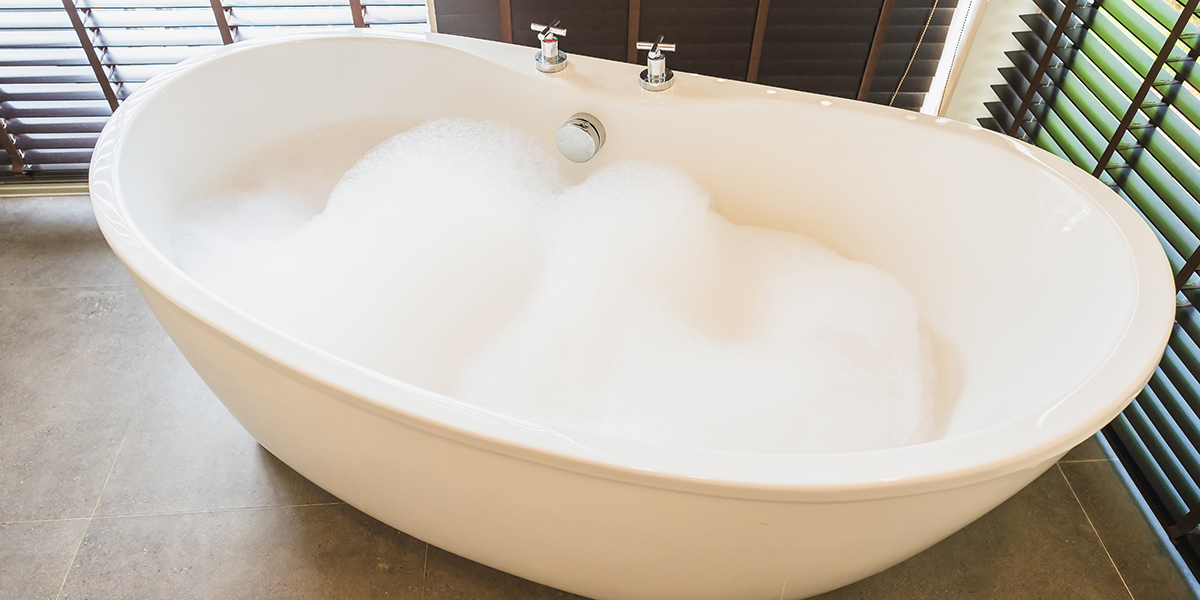Identifying the Causes of Discharge in the Bathtub
Identifying the Causes of Discharge in the Bathtub
Blog Article
We have noticed the article involving Why is There Sewage Coming Up Through the Bathtub down the page on the internet and thought it made sense to write about it with you here.

Sewage back-up in the bath tub can be a distressing and unhygienic issue for any home owner. Not just is it troublesome, but it additionally postures significant wellness threats and suggests underlying problems with the plumbing system. Recognizing why sewer is showing up through the bath tub is critical for taking proper action to resolve the problem effectively.
Introduction to the Issue
Typical Reasons for Sewage Back-up
Clogs in the Sewage System Line
Among the most common reasons for sewer backup is an obstruction in the sewer line. This can occur because of the build-up of particles, grease, or international objects in the pipelines, stopping proper flow and causing sewer to support right into your bath tub.
Tree Root Intrusion
Tree roots looking for wetness and nutrients can infiltrate drain lines with small splits or joints. Over time, these origins can expand and expand, causing substantial damage to the pipelines and bring about sewer backup issues.
Comprehending the Problem
When sewage starts backing up right into the tub, it's a clear indicator of an issue with the drain system. The wastewater that should be flowing away from your home is rather finding its way back into your space, which can lead to significant damages and carcinogen.
Prospective Reasons
Numerous variables can add to sewer back-up in the bath tub. From clogs in the drain line to issues with the plumbing framework, determining the root cause is crucial for locating an option.
Aging Facilities
Older homes may have dated plumbing systems that are more prone to corrosion, fractures, and damage. As pipes age, they come to be much more vulnerable to leaks and blockages, increasing the chance of sewage back-up cases.
Heavy Rainfall or Flooding
Throughout durations of heavy rainfall or flooding, the drain system might become overloaded with excess water, triggering backups and overflows. This can result in sewer backing up into bathtubs and other fixtures inside the home.
Indications of Sewage Back-up
Foul Odors
Unpleasant smells originating from drains or components, particularly in the washroom, may indicate sewage back-up problems. These smells are commonly solid and relentless, indicating a problem that calls for immediate focus.
Slow Draining Fixtures
Tubs, sinks, and bathrooms that drain pipes slowly or otherwise whatsoever could be experiencing sewage backup. If multiple components are influenced at the same time, it's most likely that the problem originates from a typical factor, such as the main drain line.
Gurgling Sounds
Unusual gurgling or bubbling noises coming from drains when water is running somewhere else in the house are a measure of air caught in the plumbing system. This air buildup can arise from sewage back-up and ought to be investigated quickly.
Health And Wellness Threats Associated with Sewer Backup
Contamination of Supply Of Water
Sewer backup can contaminate the water supply in your house, posturing a serious health and wellness threat to you and your household. Direct exposure to infected water can result in stomach issues, skin infections, and other diseases.
Mold and mildew Growth
Moisture from sewage back-up can produce perfect conditions for mold development in your house. Mold and mildew spores can exacerbate respiratory system problems and cause allergies in sensitive people, making punctual clean-up important.
Spread of Condition
Sewage contains harmful microorganisms, infections, and parasites that can cause a range of illness, including hepatitis, cholera, and gastroenteritis. Coming into contact with sewer or contaminated surfaces puts you at risk of infection.
Tidying up After Sewage Back-up
Sanitation Procedures
Thoroughly decontaminate and disinfect impacted areas after sewer back-up to eliminate dangerous bacteria and avoid mold and mildew development. Use suitable cleaning items and safety equipment to ensure risk-free and effective clean-up.
Restoration of Impacted Locations
Fix any type of damages to flooring, wall surfaces, or fixtures caused by sewage back-up. Depending upon the degree of the damages, you might require to change carpets, drywall, or various other materials to restore your home to its pre-loss problem.
Immediate Actions to Take
Switching Off Water
In case of sewer backup, it's important to shut off the water supply to avoid additional contamination and damages. Locate the primary water shutoff valve in your home and closed it off till the problem can be solved.
Speaking To a Specialist Plumber
Handling sewer backup is not a DIY task. Get in touch with a licensed plumber with experience in handling sewage-related issues to examine the circumstance and carry out essential repairs or cleanups.
Preventing Contact with Contaminated Water
Until the sewer back-up is solved, prevent contact with polluted water to avoid the spread of bacteria and pathogens. Use safety equipment if you should remain in the affected location and wash your hands completely afterward.
Preventive Measures
Normal Upkeep of Sewer Lines
Set up regular inspections and maintenance of your sewage system lines to recognize and attend to prospective problems before they intensify right into significant troubles. This can include clearing out particles, inspecting for tree root breach, and repairing any kind of damaged pipes.
Setting Up Bayou Shutoffs
Think about mounting backwater shutoffs in your plumbing system to stop sewage from flowing back right into your home during periods of heavy rainfall or flooding. These shutoffs automatically close when water starts backing up, shielding your property from contamination.
Proper Disposal of Household Waste
Prevent flushing anything besides toilet paper and human waste down the toilet to avoid obstructions and blockages in the sewer line. Dispose of oil, oil, and various other household chemicals properly to minimize the threat of plumbing problems.
Why Is Water Backing Up in My Bathtub When I Flush My Toilet?
What to do about a sewer line clog
First, don’t bother with plunging. No amount of plunging will dislodge the clog in a sewer line. The clog is too far away. Plungers are for clogs in the toilet itself, not the sewer line. Plus, the most likely causes of a sewer clog are:
Tree roots Flushed toys or feminine products Grease buildup Those items don’t move easily. And in the case of tree roots, the roots need to be cut out of the pipe and the pipe will need to be repaired.
You’ll need a closet auger. A closet auger is a type of plumber’s snake with a protective cover to keep from scratching the delicate porcelain toilet. If the clog is further down, you may need to remove the toilet or use one of your cleanouts to get to the clog.
We also recommend doing a video inspection of the drain to ensure that the cause of the clog has been completely removed. Otherwise, you could have the same problem again in a few days or weeks.
https://mspplumbingheatingair.com/blog/why-is-water-backing-up-in-my-bathtub-when-i-flush-my-toilet

We had been made aware of that report on Why is Sewage Backing Up Into My Bathtub? through a pal on a different blog. In case you liked our blog posting if you please be sure to pass it around. Many thanks for your time. Return soon.
Schedule Appointment
Report this page